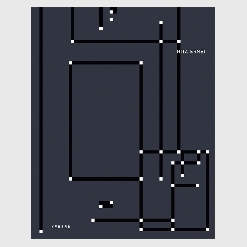The question concerning the relation between architecture and art has been  posed countless times and answered equally often. But despite all endeavors, there is no satisfactory answer that could illuminatingly shed light on precisely this relation once and for all. The Ancients saw architecture as the supreme of all the arts. Yet despite this unofficial crowning, the struggle between stone and canvas is still far from being settled; on the contrary. The intrinsic quality of painting, with its advantage of being able to create illusions and captivate gazes, empowered Fine Art to turn increasingly to architecture, but not in order to illustrate it and to record houses and churches in a documentary fashion. Instead, new worlds arose: Arcadian landscapes by Poussin captured the beauty of invented Roman villas and palaces; Karl Friedrich Schinkel populated his works with Gothic cathedrals which, in his large-format paintings, seemed more beautiful, purer, clearer, and nobler than many a church building in a European city center; his imagined Gothic architectures and Roman vedute became places of yearning. The image beholder could not get his or her fill of looking at the fantastic dream buildings, which seemed to lead back into long-decayed worlds, the winning back of which appeared so promising for the future. And Edward Hopper later painted a world in which architecture becomes the central bearer of his visual concept of melancholy and invented memory. It is not architecture as a real object, worthy of illustration, that is important to him. His concern, rather, is to create fictional worlds, which architecture could endow with stability and whose framework creates space for the painter’s world. And architecture is used by this painter’s world as a graphic and geometric promise of form.
posed countless times and answered equally often. But despite all endeavors, there is no satisfactory answer that could illuminatingly shed light on precisely this relation once and for all. The Ancients saw architecture as the supreme of all the arts. Yet despite this unofficial crowning, the struggle between stone and canvas is still far from being settled; on the contrary. The intrinsic quality of painting, with its advantage of being able to create illusions and captivate gazes, empowered Fine Art to turn increasingly to architecture, but not in order to illustrate it and to record houses and churches in a documentary fashion. Instead, new worlds arose: Arcadian landscapes by Poussin captured the beauty of invented Roman villas and palaces; Karl Friedrich Schinkel populated his works with Gothic cathedrals which, in his large-format paintings, seemed more beautiful, purer, clearer, and nobler than many a church building in a European city center; his imagined Gothic architectures and Roman vedute became places of yearning. The image beholder could not get his or her fill of looking at the fantastic dream buildings, which seemed to lead back into long-decayed worlds, the winning back of which appeared so promising for the future. And Edward Hopper later painted a world in which architecture becomes the central bearer of his visual concept of melancholy and invented memory. It is not architecture as a real object, worthy of illustration, that is important to him. His concern, rather, is to create fictional worlds, which architecture could endow with stability and whose framework creates space for the painter’s world. And architecture is used by this painter’s world as a graphic and geometric promise of form.
Rita Ernst is free. Her painting is absolute and indivisibly bound to the artist’s expressive force. As a painter, she assimilates from what she sees things that trigger a resonance in her painting. And in her own way of looking at things Mies van der Rohe plays a role that, while great, should not be overestimated. For Rita Ernst does not paint in order to visualize, to complete in painting, blueprints that were never built. Neither does she seek to repeat the creative finesses of Mies’s built architecture in painting, or to vary the spirit in Mies’s constructions on the canvas. She creates something new. And yet this new thing is inconceivable without architecture. In a wholly similar manner to Poussin, Schinkel, and Hopper, the painter conquers architecture in order to metamorphose it. In so doing, she does not perceive Mies’s architecture as a voluminous whole, as a space up to which one walks and whose interior reveals itself only in synthesis with the person himself and the proportions of the shell that surrounds him. Rita Ernst’s curiosity is awakened through floor plans and photographs which are unable to illustrate either the spirit or the appearance that are peculiar to the respective houses, palaces, and cathedrals. For only the visitor’s own movement allows him to grasp the essence of architecture.
Rita Ernst, however, is a painter, and she has recourse to photographs and floor plans because both media approximate painting: They are arranged two-dimensionally and their boundaries are clearly defined. Conceived as rectangles, the edge of drawing and photo is simultaneously the boundary of perception; a segment, precisely. Rita Ernst conquers the work of Mies by concentrating on segments; in them the artist recognizes a quality that appears imperative for her own creative work. She advances into a closed architectural world, into the iconic oeuvre of a great master who has vanished onto the Parnassus. She takes what she needs and concentrates on what, in her view, is the architect’s essence, in order to strip out the part from his work that belongs to her. Painting therefore wins over the primacy of architecture. The competition is decided and the world belongs to the painting of Rita Ernst.
